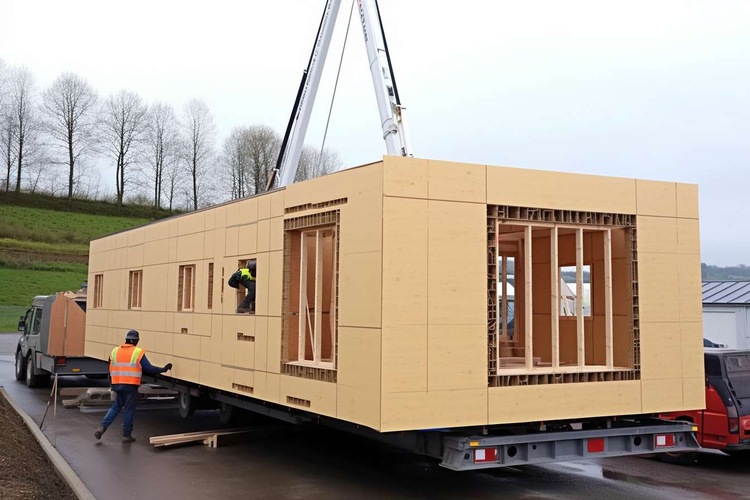Thinking About a New Home? Explore Fast, Green, and Flexible Ways to Build in Australia for 2025
Building a new home in Australia in 2025 offers more options than ever before. Advances in factory-built housing, including modular, prefab, and kit homes, provide practical and efficient alternatives to traditional construction. These methods combine speed, design flexibility, and sustainability to meet the evolving needs of homeowners.

Faster Build Times with Factory-Built Homes
Factory-built homes, such as prefabricated and modular houses, are constructed in controlled environments before being transported to the site. This process significantly reduces build times compared to conventional onsite construction. Typically, once the design is finalized, completion can occur within 2 to 14 weeks depending on the home’s size and complexity. Controlled factory conditions minimize weather delays, enabling more predictable scheduling and faster delivery of finished homes.
The streamlined process also reduces disruptions at the building site itself, with much of the construction completed offsite. Homeowners can benefit from this accelerated timeline, especially those looking to move quickly or reduce time spent in temporary accommodation.
Flexibility in Design and Use
Modular and prefab homes offer considerable design flexibility to accommodate diverse preferences and requirements. These homes can be customized across a range of layouts, sizes, and architectural styles. Whether you want a compact urban dwelling or a spacious family home, factory-built options can be tailored to fit your vision.
Additionally, factory-built homes can be adapted for different purposes, including permanent residences, holiday homes, or even multi-unit developments. Their modular nature allows for future expansion or reconfiguration, enabling homeowners to modify the layout as needs change over time.
Understanding Costs and What’s Included
Prices for prefab and modular homes vary depending on factors such as provider, home size, design complexity, materials used, and chosen finishes. Commonly, listed prices cover the offsite construction and factory finishes, with additional costs for site-specific requirements.
These extra expenses may include delivery of the modules to the site, craning to place the modules, site preparation like foundations, utility connections, landscaping, and council permits. It’s important to obtain detailed quotes that clarify precisely what is included to understand the total investment required.
Compared to traditional construction, factory-built homes can offer cost efficiencies due to faster build times, reduced labor, and lower waste. However, site conditions and customization choices influence the final price.
Emphasizing Sustainability
Sustainability is a growing focus in the Australian housing market, and factory-built homes incorporate several environmentally friendly features. Building modules in a factory setting allows for better waste management and material efficiency. Many manufacturers use sustainable materials and energy-efficient designs to reduce environmental impact.
Additionally, modular homes can integrate features such as solar panels, rainwater harvesting systems, and enhanced insulation to improve energy performance. This focus on green building practices contributes to lower ongoing energy costs and a reduced carbon footprint.
Step-by-Step Process and Compliance
Building a factory-made home involves several key steps: initial design and customization, factory construction, site preparation, module delivery and installation, and final finishing works such as plumbing and electrical connections. Throughout this process, compliance with relevant Australian building codes and local zoning regulations is mandatory.
Council approvals and permits for modular and prefab homes are generally similar to those required for conventional homes. It’s essential to engage qualified builders and suppliers who are familiar with these requirements to ensure a smooth process.
The Role of Factory-Built Homes in Australia’s Housing Market
As of 2025, prefab and modular housing continues to grow in popularity across Australia. These options provide efficient, adaptable, and environmentally considerate alternatives that suit a range of budgets and lifestyles. Increasingly, they contribute to addressing housing availability and affordability challenges by offering faster build times and cost controls.
With ongoing advances in design, technology, and sustainability, factory-built homes are positioned to play an important role in the future of Australian homeownership.
Note: This article is intended to provide general information about factory-built housing options in Australia and should not replace professional advice tailored to individual circumstances.
Sources
- The Design Files: 7 Australian Businesses Creating Impressive Prefabricated Homes (2024)
- Anchor Homes: Top Prefab Modular Project Highlights of 2024
- Ecoliv: Modular vs Prefab vs Kit Homes in Australia
[^1]: Prefab and modular homes in Australia can be completed in as little as 2–14 weeks after design finalization.[^2]: Notable 2025 suppliers include Ample, Base Cabin, Fab Prefab, PreBuilt, Dimensions X, Arkular, and Anchor Homes.[^3]: Modular and prefab homes must conform to regular building codes and zoning, and require similar council approvals as site-built homes.
Disclaimer: All content, including text, graphics, images and information, contained on or available through this web site is for general information purposes only. The information and materials contained in these pages and the terms, conditions and descriptions that appear, are subject to change without notice.




